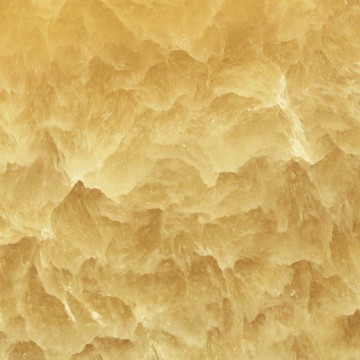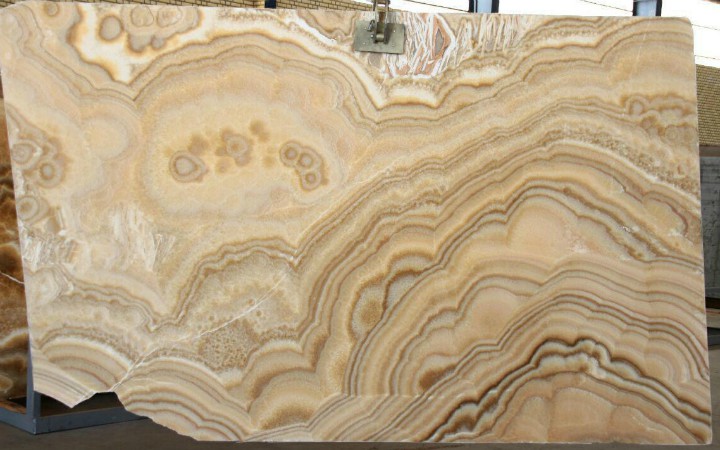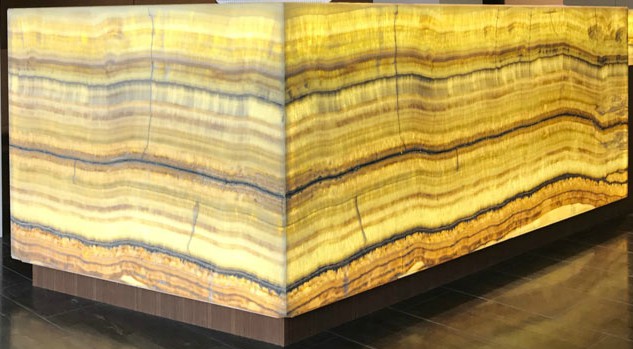Honey Onyx

Honey Onyx originates from quarries close to Mugla1 in Turkey. As the name suggest it is a honey like colour (hence the name). This is an unusual natural stone with a high level of translucency.
Geologically honey onyx is compact banded travertine composed of very fine-grained calcite2. The colour of the onyx comes from staining due to oxidation. This oxidation is caused mainly from penetrating ground water. If you look at a vein cut slab of honey onyx such as the one at the very bottom of the page you can literally see in the patterning how groundwater3 has run through and oxidised the slab.
The look of a honey onyx slab is quite different depending on the cutting method used.
There are two methods you can use when cutting onyx, vein-cut and cross-cut. Vein-cut is the cutting of the onyx in vertical direction and cross-cut is the cutting of the onyx in a horizontal direction. By cutting vertically the veins remain flowing through the onyx, this gives the swirl type more linear effect going through the stone.
Whereas cross cut gives more circular patterns in the honey onyx. This circular pattern can be seen in the image below.
At the very bottom of this article you can see vein-cut onyx used in the cladding of a reception desk. Here you see a special feature of onyx. That is the insertion of light behind the onyx. As the light passes through the transparent parts onyx of the material, the whole slab is illuminated creating a breath-taking view which will impress all who set eyes upon it.

The golden colour of honey onyx brings warmth to any room and combines well with nearly any colour. Many people find it a good alternative to yellow travertine or Giallo Siena Marble.
Honey onyx can be used in a range of applications. From the construction of luxury furniture items such as onyx dining tables. All the way through to bathroom feature walls cladded in honey onyx tiles and onyx worktops.
Onyx is a stunning site whenever it is used and the way it allows light passes through it with or without backlighting makes it one of the best materials on the planet to use as an enchanting centre piece.

Products in this Material